Story-at-a-Glance Summary
- Vendor Central’s advantages have shrunk, with brands now facing rising fees, limited support, and reduced visibility. 📉
- Seller Central offers full pricing control, better margins, and real‑time reporting, making it the preferred long‑term growth model. 🚀
- Most Vendor accounts underperform during major Amazon events because discounts are mandatory and margins erode quickly. 💸
- Seller Central gives brands freedom to choose promotions, set discount depth, and pair ads with event strategy. 🎯
- Vendor costs are fixed and deducted upfront; Seller costs are variable, allowing brands to manage profitability more intentionally. 💰
- Seller Central enables faster product launches, which is critical for categories driven by trends, influencers, and seasonality. ⚡
- Brands gain transparency across operations, pricing, and ads, plus global scalability without renegotiating terms. 🌍
- With proper planning, focusing on SKU audits, logistics setup, and ad continuity, Vendor-to-Seller transitions can be smooth and profitable. 🔄
- beBOLD Digital routinely helps brands unlock 20–35% higher margins per SKU by shifting to Seller Central. 📈
The Great Amazon Shift
Vendor Central once represented prestige, an exclusive wholesale relationship where Amazon bought your products, managed retail operations, and helped scale your brand. But the landscape has changed. Today, Vendor Central often feels more restrictive than supportive, with shrinking benefits, rising fees, and limited control.
Seller Central, originally designed for smaller sellers, has evolved into a far more dynamic ecosystem, one that provides flexibility, transparency, and stronger unit economics. As Amazon continues to prioritize its 3P marketplace (now accounting for 60%+ of all unit sales), more brands are exploring transitioning from Vendor (1P) to Seller (3P) to regain control over pricing, inventory, and growth.
The Vendor Central Reality Check
Vendor Central once offered brands a sense of prestige, exclusivity, and a hands‑off retail experience. But the reality in 2025 is very different. Support has diminished, operational friction has increased, and the economic model has become far less favorable for most small‑to‑mid‑size brands. This section expands on the structural challenges brands now face and why Vendor Central is no longer the growth engine it used to be.
Who Is Your Vendor Manager?

Alt text:
In the early years of Amazon Retail, brands typically received consistent communication, hands‑on collaboration, and direct assistance from dedicated Vendor Managers. Today, that model has shifted.
Most brands no longer have a single point of contact, and those that do often find that the relationship is extremely limited unless they invest in Amazon Vendor Services (AVS), a program that now costs around $180,000 per year for access to support that is shared across several brands.
What this means for brands:
- You pay more but receive less. AVS support is costly and rarely tailored.
- Response times are slow. Even critical issues, such as PO shortages or listing inaccuracies, can take weeks to resolve.
- Vendor Managers no longer influence operational outcomes. Much of the role has been replaced by ticket-based systems and automated tools.
In short, Amazon Retail does not function as a strategic partner for most brands anymore.
Shrinking Benefits
Vendor Central used to provide meaningful advantages, such as merchandising opportunities, premium access to new programs, brand protection, and early access to new advertising tools. Today, many of these benefits either no longer exist or have migrated to Seller Central, where they are more transparent and more accessible.
Former Vendor‑exclusive features have diminished:
- Operational support: Amazon no longer assists with catalog management the way it once did.
- Promotional visibility: Deal placements and merchandising are now algorithmic and less predictable.
- Content control: Vendors often find their titles, images, and bullets overwritten by Amazon or external data sources.
- Reporting: Vendor Central’s data tools lag far behind Seller Central’s real‑time analytics.
Additionally, Vendors must adapt to unpredictable Amazon behaviors such as:
- Sudden cost increases or term changes
- Removal of POs for entire categories
- Automated price matching that erodes margins
- Involuntary enrollment in discount programs or events
Step 1: Compare the Core Costs

Understanding the true cost difference between Vendor Central (1P) and Seller Central (3P) is the foundation of any successful transition. For many brands, this cost analysis becomes the turning point: revealing hidden fees, margin erosion, and operational inefficiencies in Vendor Central that were previously overlooked.
Here is an expanded breakdown for easier comparison.
Vendor Central (1P) Cost Structure: The "Fixed Cost" Model
Vendor Central operates like a traditional wholesale relationship. Amazon buys your products at a negotiated cost, usually far below MSRP, and then layers on multiple deductions.
Typical 1P Cost Components:
- Wholesale pricing (40–50% off MSRP): Your margins are locked in at wholesale rates, which severely limits profitability.
- Co-Op & Provisional Co-Op fees: Often 10 to 15% combined, covering marketing, freight, and base program fees.
- Damage allowances & chargebacks: Amazon deducts for damages, shortages, packaging issues, or compliance violations.
- Freight/collect terms: Amazon controls transportation. Brands often pay additional hidden logistics-related fees.
- Advertising Co-Ops: Vendors must fund Amazon-run (which who knows if Amazon even runs ads or keeps the extra margin)
- Sponsored Ads + optional DSP: Full control over budgets and optimization strategy.
- Optional AVS support ( approximately $180,000 per year): Even though expensive, AVS support is often necessary due to poor Vendor responsiveness.
Vendor Central costs are predictable but rigid. They erode margins quickly, and vendors have little control over how Amazon applies them.
beBOLD Tip: Want to see how replenishable categories protect margins and drive repeat purchases? Explore our guide on Best Household Items for Subscribe and Save to understand which products thrive with consistent demand.
Seller Central (3P) Cost Structure via FBA: The "Variable Cost" Model
Seller Central gives brands more control and visibility. While fees still exist, you decide how much to spend, when to spend it, and which SKUs merit investment.
Typical 3P Cost Components:
- Referral fee (approximately 15%): Standard across most categories.
- FBA fulfillment fee (around $5/unit on average): Depends on size, weight, and category.
- Inbound shipping ($0.10 to $0.25/unit): Rates vary by prep method and carton optimization.
- Storage & return handling: Charged monthly based on usage.
- Sponsored Ads + optional DSP: Full control over budgets and optimization strategy.
- Optional agency support: beBOLD offers full management, analytics, and automated decision-making tools.
In short, Seller Central fees scale with your strategy. You control SKU economics, allowing you to throttle spend up or down based on performance.
beBOLD Digital Takeaway: Why the Cost Structure Matters
- Vendor costs are fixed and automatically deducted before payment, leaving brands with limited margin flexibility.
- Seller costs are variable, allowing you to adapt spending based on seasonality, demand, and profitability targets.
This flexibility is one of Seller Central’s greatest advantages. It empowers brands to optimize, iterate, and scale costs in alignment with performance, not in alignment with Amazon’s wholesale priorities.
Step 2: Tentpole Events and Discount Control
Tentpole events, including Prime Day, Big Deal Days, and Black Friday/Cyber Monday, are some of Amazon’s highest‑traffic periods. But the value of these events depends heavily on whether you're a Vendor (1P) or a Seller (3P). Vendors often face high mandatory costs with little flexibility, while Sellers can tailor event participation based on strategy, profitability, and inventory positioning.
beBOLD Tip: Not every SKU needs a tentpole discount. Use Most Popular Black Friday Items 2025 to decide where aggressive pricing actually makes strategic sense.
Vendor: All Cost, No Control
For Vendors generating under $25M annually, tentpole events can be especially challenging. Amazon decides if you’ll participate, how deep discounts must be, and how your products are positioned. This creates a scenario where brands:
- Have no control over event eligibility. Amazon selects which items or brands qualify.
- Must fund the entire discount, even if Amazon chooses an aggressive price point.
- Absorb margin loss quickly, especially in categories with slim wholesale margins.
- Cannot adjust pricing or timing, even if competitors undercut or market conditions shift.
In practice, many Vendors find that event participation drives volume but not profitability. With wholesale margins already compressed and Vendor deductions stacked on top, deep discounts often eliminate any potential upside.
Seller: Strategy Over Spend
Seller Central transforms tentpole participation from a mandate into a strategic decision. Instead of being forced into discounts, Sellers can evaluate event costs based on demand forecasts, inventory health, and margin goals.
Sellers gain full autonomy to:
- Select which events to join based on profitability and inventory.
- Control discount depth, from a modest 5% to deeper promotional pushes.
- Choose timing and duration to align with seasonal peaks or ad campaigns.
- Pair deals with Sponsored Ads, DSP retargeting, and Storefront updates for maximum brand exposure.
This flexibility allows Sellers to optimize not only for revenue but for ROAS, TACoS, and long‑term ranking improvements.
Why This Difference Matters
Tentpole events can be powerful growth drivers, but only when executed with intention. Sellers can build campaigns around:
- Inventory sell‑through goals
- Product launches or restocks
- Competitor pricing movements
- Cross‑channel promotions (TikTok, Meta, influencer pushes)
Vendors, by contrast, have little ability to respond dynamically. When Amazon mandates deep discounts during a cost‑sensitive period, Vendors either absorb losses or risk strained relationships with Amazon Retail.
beBOLD Digital Insight
Effective event participation requires control, timing, and data, all of which Seller Central provides. With Seller Central, brands can protect margins, coordinate marketing, and treat tentpole events as part of a broader strategy rather than an unavoidable expense.
beBOLD Digital helps brands model promotional ROI, adjust pricing strategies, and align paid media to ensure tentpole events contribute to profitable, sustainable growth, not margin erosion.
Step 3: Transparency and Control
Transparency and operational control are two of the strongest reasons brands shift from Vendor Central to Seller Central. Unlike the 1P model, where Amazon dictates pricing, inventory flow, reporting access, and content, Seller Central gives brands a direct line of sight into performance and the ability to make changes instantly. For fast-moving categories like Beauty, Pet, Wellness, and Home, this difference is transformative.
Data Access: Full Visibility vs. Limited Reporting
A major gap between 1P and 3P is the level of data transparency Amazon provides.
|
Vendor Central |
Seller Central |
|
Limited access to real-time sales and demand insights |
Real-time SKU-level sales and revenue dashboards |
|
No SKU-level profitability reporting |
Detailed keyword, search term, and conversion analytics |
|
Advertising data often delayed or incomplete |
Access to Search Query Performance, Brand Analytics, and Category Reports |
|
Minimal customer behavior insights |
Clear visibility into fees, refunds, returns, and repeat purchase behavior |
These data improvements allow brands to make faster, more informed decisions, improving both profitability and operational planning.
beBOLD Digital Advantage: With beBOLD’s analytics platform, brands receive automated SKU-level P&Ls, margin insights, and hourly performance updates, creating a single source of truth for all Amazon decision-making.
Inventory & Operations: Reactive vs. Proactive Management
Vendor Central forces brands to operate around Amazon’s purchase orders. If Amazon under-orders, you lose sales. If they over-order, you face operational strain. You cannot influence restock timing.
|
Vendor Central |
Seller Central |
|
Amazon controls PO cadence, often resulting in unexpected stockouts, overstock exposure, and slow demand response. |
You control the entire inventory cycle, including replenishment timing, safety stock planning, seasonal or promo-driven restocks, and the ability to use hybrid FBA/FBM strategies for flexibility. |
This level of control is especially valuable for brands with fluctuating demand or high seasonality.
Faster Product Launches: Days vs. Months
Launching new products under Vendor Central is slow. Amazon must approve new items, forecast demand, and place initial POs. This process can take weeks or even months, causing brands to miss trends.
Seller Central allows:
- Immediate listing creation
- Instant A+ content and image updates
- Fast activation of ads and Vine reviews
Brands that rely on speed—such as those responding to TikTok trends, influencer collaborations, or seasonal windows—benefit enormously from this accelerated launch cycle.
Pricing Control: Instant Adjustments
Pricing is one of the most painful Vendor constraints.
|
Vendor Central |
Seller Central |
|
Amazon controls retail pricing and frequently price matches. |
You control your retail price immediately. |
|
Retail price changes require Amazon approval. |
No delays, no approvals, no wholesale negotiations. |
|
Cost changes can take 60–90 days to implement. |
Full ability to adjust for tariffs, freight changes, and cost incre |
This flexibility helps brands maintain healthy margins year-round.
Brand Experience: Protecting Your Digital Shelf
A strong brand presence is essential for long-term success.
|
Vendor Central |
Seller Central |
|
Amazon may alter your titles, images, or bullet points. |
Full creative control across all listings. |
|
Catalog contributions can be overwritten without notice. |
Ownership of A+ Content, Premium A+, and Brand Store design. |
|
Limited control over A+ content or variations. |
Ability to update titles, images, and descriptions instantly. |
|
Better protection against unauthorized edits through Brand Registry. |
For brands in beauty, wellness, and premium categories, maintaining consistency in messaging and visuals is critical.
Global Scalability: Seamless International Expansion
Vendor expansion requires new contracts, compliance checks, and separate negotiations with each regional Amazon Retail team.
Seller Central simplifies this:
- Launch quickly in Amazon CA, UK, EU, AU, and other marketplaces.
- Maintain centralized catalog management.
- Replicate winning SKUs internationally with fewer barriers.
This creates a scalable path for brands looking to grow beyond the U.S.
beBOLD Digital Insight
Seller Central eliminates bottlenecks and empowers your brand to operate proactively—not reactively. With more control over data, pricing, creative assets, and inventory, Seller Central positions brands for sustainable, scalable growth that Vendor Central can no longer deliver.
Step 4: Transition Planning for Vendor to Seller Central

Transitioning from 1P to 3P isn’t just a switch; it’s a managed process that requires careful timing, operational alignment, and data‑driven decision‑making. A well-planned transition ensures continuity, protects your rankings, and prevents Buy Box conflicts while unlocking the benefits of Seller Central.
A strategic transition typically includes four phases: assessment, preparation, controlled launch, and scale. Below is an expanded breakdown to help brands understand what a smooth, profitable shift looks like.
Phase 1: Assessment (Know Your Numbers and Risks)
Before making any operational move, brands should evaluate:
- SKU-level profitability on 1P vs. 3P
- Operational readiness (FBA-prep, labeling, packaging compliance)
- Existing Vendor inventory, which must sell through before activating 3P offers
- Timeline risks, including seasonality and lead times
This phase ensures you transition the right SKUs—and avoid cannibalizing your existing business.
Phase 2: Pre-Transition Preparation
This is where brands lay the groundwork. A strong pre-transition strategy prevents the most common issues such as listing suppression, Buy Box instability, and stockouts.
Key preparation tasks:
- Audit logistics workflows: Ensure FBA carton guidelines, prep standards, and replenishment cadence are ready.
- Verify Brand Registry: Confirm trademarks and IP protections are active for catalog control.
- Plan advertising continuity: Structure Sponsored Ads and DSP to maintain ranking through the transition.
- Product listing rebuilds: Prepare updated titles, bullets, A+ content, and variations for Seller Central.
These steps provide the infrastructure needed for a controlled rollout.
Phase 3: Controlled Launch (Start Small and Scale Intentionally)
Instead of moving your entire catalog at once, a measured rollout allows you to:
- Validate profitability with a subset of SKUs
- Confirm FBA inbound processes are smooth
- Test PPC strategies without disrupting overall business
- Identify ASIN conflicts or listing gating early
Brands typically begin with 3 to 10 SKUs, depending on catalog size. This minimizes risk while generating early data to optimize your broader transition.
Phase 4: Full Migration and Optimization
Once initial SKUs prove stable and profitable, brands can expand their 3P footprint.
This stage often involves:
- Scaling FBA inventory levels
- Migrating additional SKUs
- Refining PPC strategies based on early learnings
- Updating pricing structures to match 3P goals
- Monitoring Buy Box performance and customer feedback
Brands also leverage newly unlocked Seller Central features—such as automated pricing alerts, global expansion tools, Brand Analytics, and direct customer insights—to accelerate growth.
beBOLD Digital Insight
Transition success is not about speed; it's about sequencing. Brands that approach the migration strategically experience smoother launches, stronger margins, and fewer interruptions.
Transitioning is easier when phased, structured, and supported by reliable profitability data. beBOLD’s transition framework helps brands avoid common pitfalls, protect rankings, and activate Seller Central in a way that maximizes long-term success.
The beBOLD Perspective: Why Seller Central Wins Long-Term
Seller Central isn’t just a different operational model. It’s an entirely different growth philosophy. beBOLD helps brands transition from the restrictive, Amazon‑controlled environment of Vendor Central into a model where the brand owns the levers of success. Our approach centers on enabling Scalable, Sustainable, and Profitable growth, and Seller Central aligns perfectly with all three pillars.
Why Seller Central Aligns with beBOLD’s Growth Framework
Seller Central empowers brands with the autonomy needed to grow intentionally rather than reactively.
- Scalable Growth
Seller Central allows brands to scale strategically across:
-
- Catalog expansion: Launch new SKUs, test variations, and build multipacks or virtual bundles without waiting for Amazon Retail approvals.
- Geographic reach: Expand quickly into Canada, the UK, EU, and Australia, all without renegotiating vendor terms.
- Advertising maturity: Control your own PPC, DSP, and promotional investments based on performance, not Amazon’s priorities.
This adaptability makes Seller Central a future‑proof model for brands ready to grow on their own terms.
- Sustainable Growth
In Vendor Central, profitability is unpredictable. Amazon controls your price, determines your cost changes, and can introduce new fees with no warning. Seller Central reverses that dynamic by giving brands:
-
- Full pricing authority
- Transparent fee structures
- Predictable cash flow through 14‑day payouts
- Visibility into true SKU‑level profitability
This transparency helps brands build durable, margin‑positive operations that aren’t vulnerable to Amazon’s wholesale decisions.
- Profitable Growth
Seller Central unlocks stronger margins through:
-
- Variable fees you can optimize
- FBA efficiencies
- Control over discount strategy
- Ability to fine‑tune ad spend for ROAS and TACoS
With Seller economics, brands can protect margin during promotions, respond quickly to cost increases, and build long‑term profitability.
Brands that transition with beBOLD don’t just regain control. They experience measurable, repeatable improvements across their Amazon business.
Across dozens of Vendor‑to‑Seller migrations, beBOLD has helped brands achieve:
- 20 to 35% higher margins per SKU, often within the first 90 to 120 days
- More accurate forecasting through real‑time data and inventory visibility
- Faster keyword ranking lifts using coordinated PPC + DSP strategies
- Reduced dependency on Amazon Retail, improving consistency in sales velocity
- Better brand protection, thanks to stronger catalog authority and streamlined IP enforcement
These outcomes are made possible because Seller Central provides the transparency, responsiveness, and financial clarity that Vendor Central lacks.
Take Back Control of Your Brand With Seller Central
Vendor Central was built for Amazon’s convenience. Seller Central is built for your profitability, control, and long-term resilience.
beBOLD has helped dozens of brands navigate the transition to Seller Central with confidence. From conducting SKU-level profitability modeling to managing phased migrations, rebuilding listings, optimizing advertising, and stabilizing account health, we ensure a smooth and profitable move from Vendor to Seller.
If you’re ready to discover what your brand could earn and save by transitioning from Vendor to Seller, contact beBOLD Digital today. Let’s calculate your potential and build a roadmap tailored to your growth.


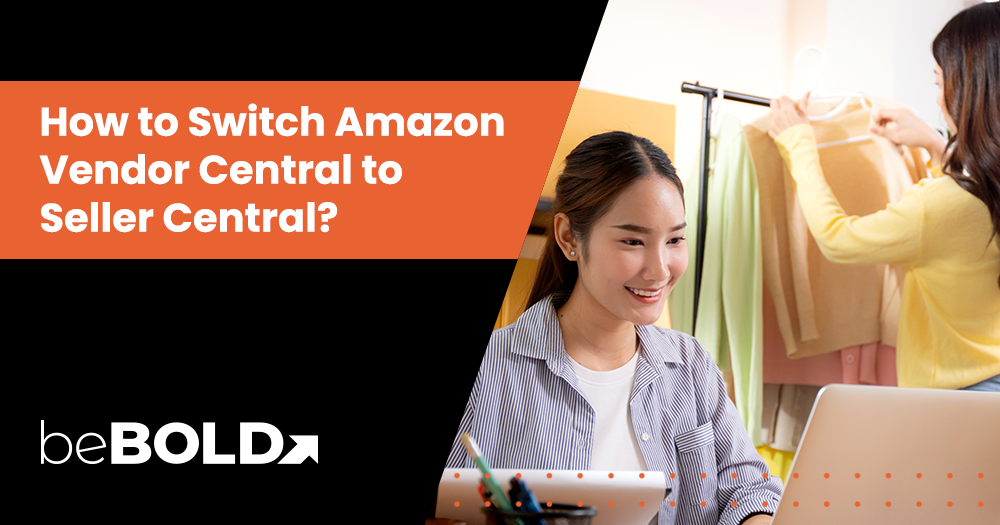

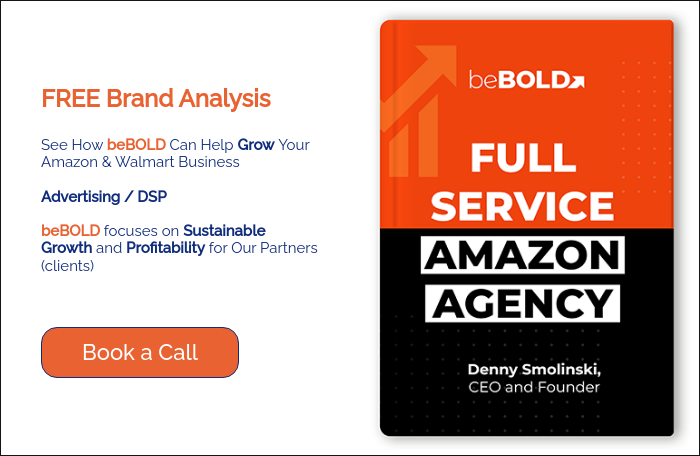



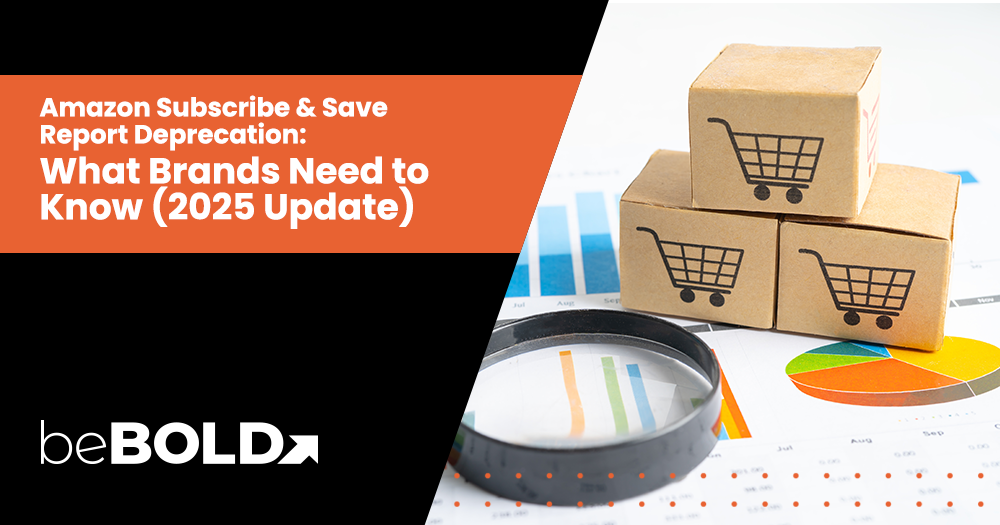
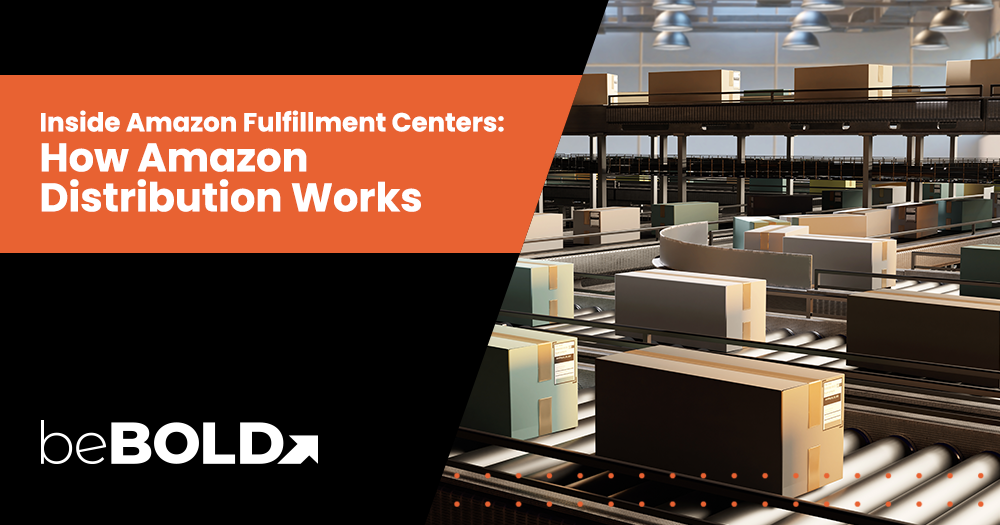
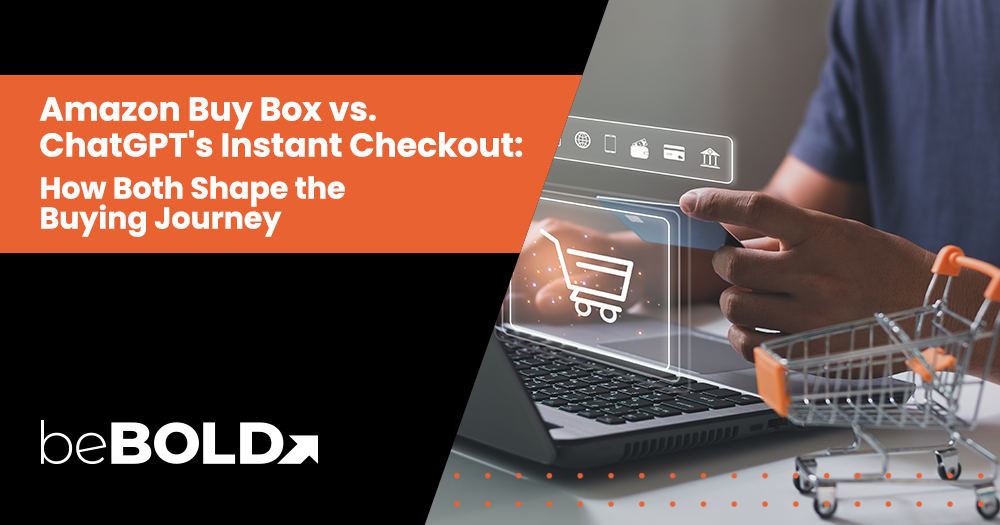
Comments